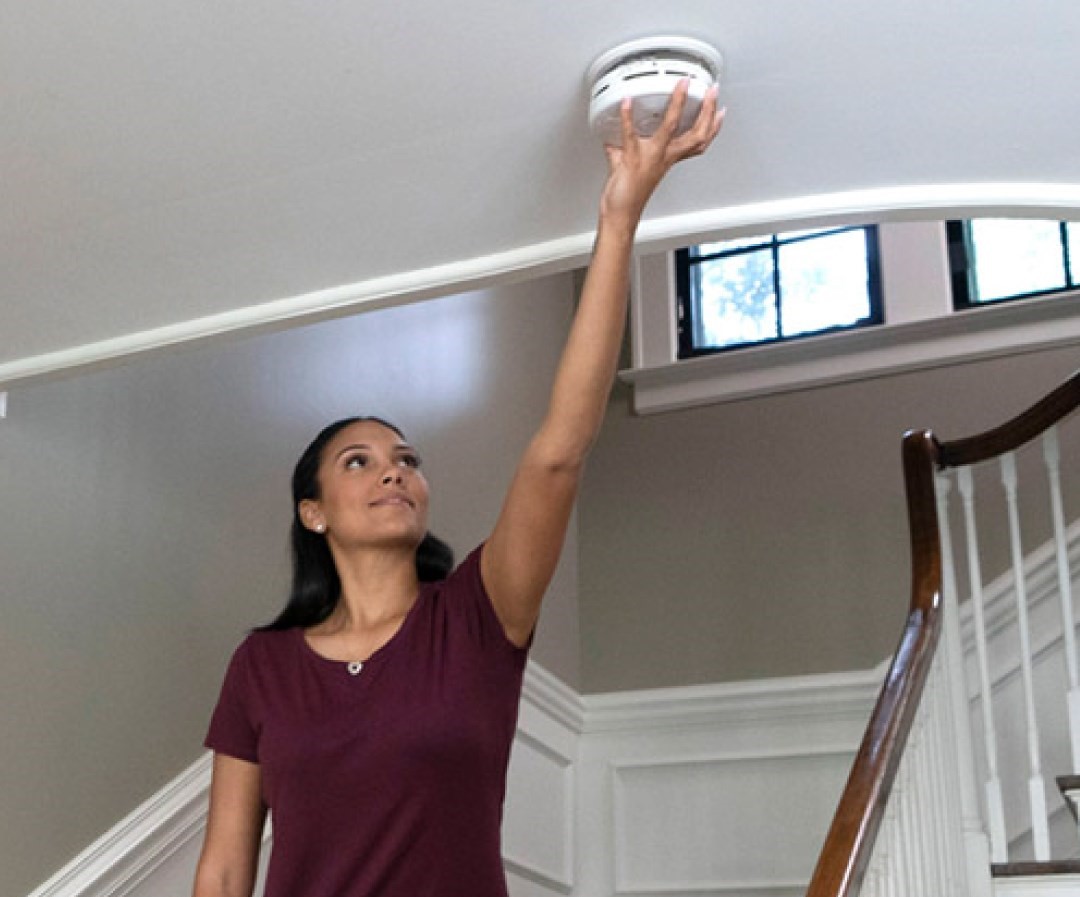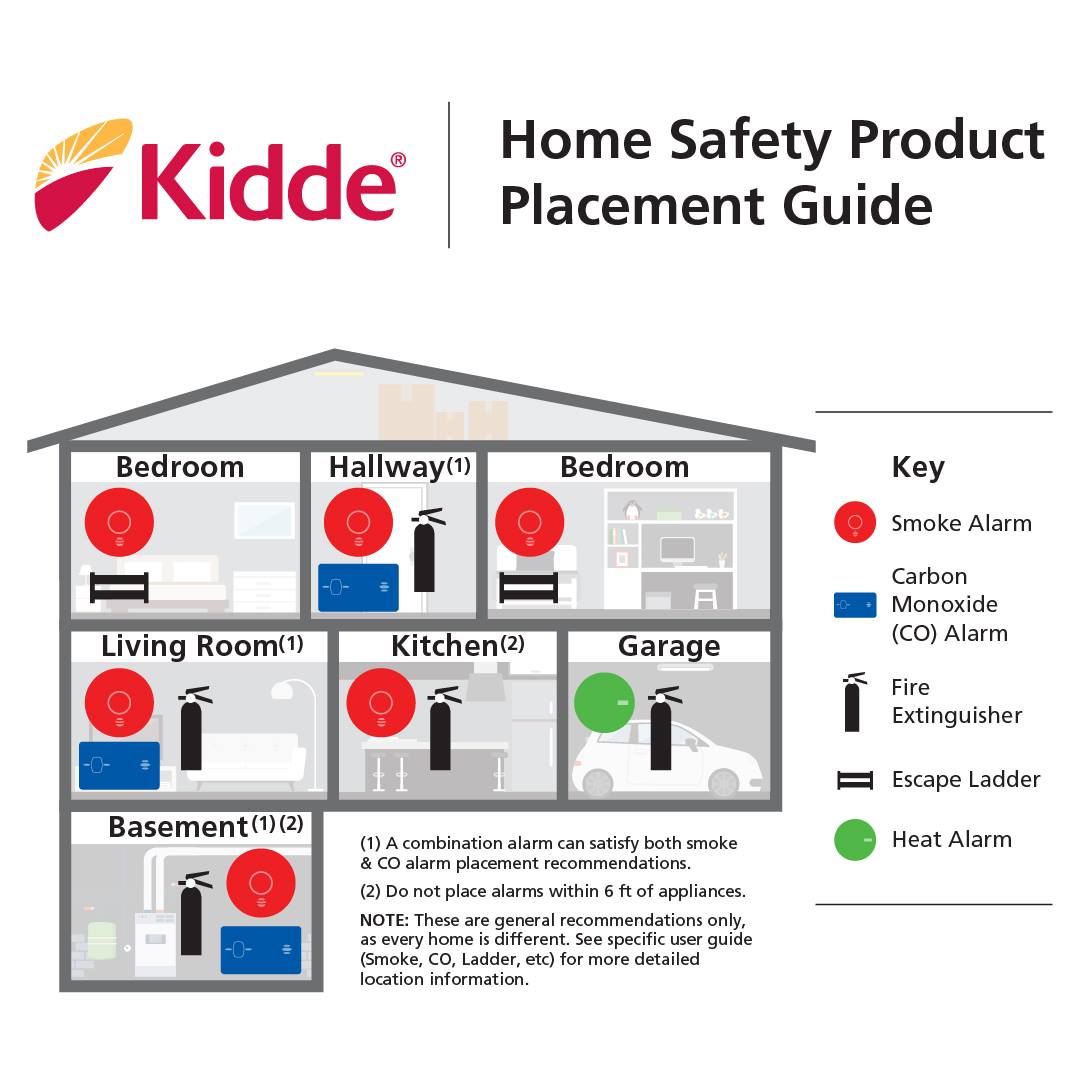Residential fires can develop quickly. A spark or a flash can turn into a fully engulfed fire in as little as 30 seconds, per the Canadian Red Cross.

Once that happens, a family may only have minutes to get out of the house.
“In today’s environment with all the different home materials, a person has as little as two minutes to successfully escape from the home,” says Sharon Cooksey, fire safety educator for Kidde, a maker of fire safety products. “Having working smoke alarms throughout the house and enough coverage throughout your home matters,” she explains, especially when you have so little escape time.
That makes it even more important to know what the beeps on your smoke alarm mean, Cooksey adds.
In partnership with Kidde, we break down what the different sounds on an alarm mean and why you should keep your smoke and carbon monoxide alarms updated.
READ MORE: Emergency calls up as Canadians stay locked down. Here’s how to prevent house fires
Learn the sounds of home smoke alarms
Cooksey says it’s important to read your device’s manual, as each model can differ. Here are four standard sounds an alarm will make and what they mean.
- One beep or chirp, then a pause of 15, 30 or 60 seconds: a trouble condition; either the battery is low or maintenance is needed
- Two beeps, then a pause of 30 seconds: it’s time to replace the entire alarm, not just the battery. Some models don’t have this notification, so checking the product manual is key.
- Three beeps continuously: smoke has been detected; take emergency action
- Four beeps continuously: carbon monoxide detected; take emergency action
“Understanding the sounds really helps you to determine which actions you need to take,” Cooksey says. It’s especially important to know what they mean given just how little time there may be to safely escape many residential fires. That’s why she suggests making the sounds of alarms a key part of fire safety education for the whole family.
If your alarm is chirping in the middle of the night, that could also be an indication that you need to replace the battery. As a battery nears the end of its life, the power it produces creates an internal resistance. A drop in temperature — especially at night, when most homes are coolest — can further increase that internal resistance and send the alarm into chirp mode.
When that happens, it may impact the battery’s ability to deliver the necessary power to warn residents in the case of an actual emergency, so be sure to replace the battery as soon as possible. In the meantime, don’t disconnect the alarm or battery to stop the chirping.
Test smoke alarms — and know when to replace them
According to Cooksey, it’s important to check your smoke and carbon monoxide alarms at least once a week. She recommends making it a part of your weekly routine and ensuring that each family member recognizes the sounds and knows what the escape plan is in the case of an actual emergency. Any escape plan should also include the family pets.
READ MORE: Kidde Canada’s fire safety tips for pet owners
Cooksey recommends having a working fire extinguisher on each floor, as they can be used to create a safe exit path in the event you need to escape a bigger fire. Place them close to an exit where possible and learn how to use them before you ever have to. In the kitchen, put a fire extinguisher behind where you cook, so it can be used on stovetop fires.
She also stresses the importance of replacing all alarms after 10 years. “Even hardwired alarms need to be replaced,” Cooksey adds. “Most people just don’t realize that every smoke alarm needs to be replaced every 10 years.”
If you aren’t sure how old your alarm is or when it was installed, check the back of the unit for the manufacturing date. When in doubt, she says, replace the unit altogether. When you do, consider purchasing a combination smoke and carbon monoxide alarm, especially since having one on each floor of the home is the law in Canada.
“In Canada, 88 per cent of homes have a risk of carbon monoxide exposure,” Cooksey says. “Having a combo unit is a good way to have double protection. Instead of maintaining separate alarms, you minimize upkeep, and it helps to keep you safe in the case of an emergency.”
For more information on fire safety and smoke and carbon monoxide alarms for your home, visit Kidde Canada.



